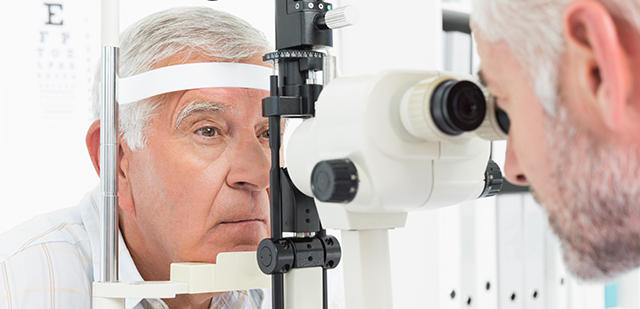Cataracts are a common condition, especially in the elderly. Cataracts develop when protein deposits cloud the eye’s natural lens, causing the patient’s vision to become impaired. Many patients who have cataracts state that it seems as though they are looking out of a cloudy window. The treatment for cataracts is surgery.
What is Cataract Surgery?
When a patient has cataract surgery, their natural lens is replaced with an intraocular lens. The older version of the intraocular lens was made of hard plastic. The material used was similar to that used in a hard contact lens. The newer type of intraocular lenses is much more like that of the eye’s natural lens. The intraocular lenses used in cataract surgery today are made of either silicone or acrylic. The intraocular lens functions in the same way that the natural lens does.
When a patient has cataract surgery, the ophthalmologist makes a very small incision, about 3 millimeters. Then, the lens is folded and inserted into the incision.
How are Cataracts Diagnosed?
Cataracts are typically diagnosed during a patient’s annual eye exam. In order for a patient to qualify for cataract surgery, their vision must be 20/50 when wearing glasses. Also, their poor vision must be making everyday tasks more difficult.
Is Cataract Surgery Invasive?
Cataract surgery is not an invasive surgery. It is typically an outpatient surgery, and in most cases, the surgery itself takes only 10 minutes. Generally, the patient has the surgery while awake, however, the ophthalmologist will often give the patient a sedative in order to help them relax during the procedure. Following the surgery, the patient may be required to wait about 30 minutes in order to be observed, which also allows the sedation medication to wear off.
What to Expect After the Surgery?
The recovery time following cataract surgery is usually quite short. When the eye shield is first removed, the patient may experience cloudy, blurry, or distorted vision. It can take time for the visual system to adjust to the removal of the cataract, and adjust to the new intraocular lens. When the patient is ready to leave, they will be given a pair of dark sunglasses. This will protect the eyes from bright lights and glare on the way home.
Patients will often see a big change in their vision as soon as one day after the surgery. It can take up to four weeks for the patient to reach their full visual potential. The intraocular lens that is implanted during the surgery does not need to be replaced over time. In most cases, the lens remains clear for the duration of the patient’s life.
Does Insurance Cover Cataract Surgery?
Most major medical plans do cover cataract surgery. If a patient has a vision plan, it does not cover cataract surgery. Because it is a medical procedure, it would be covered under the patient’s medical plan.
Patients may have Medicare which covers 80% of the cost of cataract surgery. If a patient has a supplemental insurance plan, it would cover the remaining 20%. If not, the patient would be responsible to cover the remaining cost out of pocket.
Cataract surgery can help a person see much better. A Houston cataract surgeon such as Dr. John Goosey can greatly improve a patient’s quality of life. Contact our office today to schedule your consultation.





